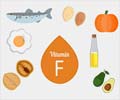Thousands of cherry trees given by Japan as a present nearly a century ago started blooming in the US capital, ushering in the Cherry Blossom Festival. This also happens to be the city's top tourist attraction.
"The weather conditions this past weekend were ideal for moving the cherry blossoms forward," said National Park Service National Capital Region Chief Horticulturist Robert DeFeo, who is in charge of nearly 4,000 cherry trees around the Tidal Basin.Every year, the park service measures with scientific precision the Blooming Period of the trees that starts when 20 percent of the blossoms open and peaks at 70 percent or more.
This year, the range of peak blooming dates forecast for the festival are April 1 to April 4, four days earlier than expected due to last week's unseasonably warm weather. The revised, full blooming period has been set for March 28 to April 9.
"As always, I reserve the right to further update the range of blooming date schedule if necessary," cautioned DeFeo.
This year's Cherry Blossom Festival, from March 27 to April 11, is expected to draw one million visitors to the Tidal Basin on the bank of the Potomac River to see its walks lined with curtains of overhanging branches heavy with pink flowers.
The festival also includes a parade, fireworks show, gala dinner cruise, river-boat, pedal-boat and bicycle tours, a lantern lighting ceremony and a Japanese street festival.
Advertisement
According to a George Mason University study, visitors, both local and nearly half from outside the region, will spend 126 million dollars in festival-related activities, including hotel rooms, restaurants, tour guides, souvenirs and T-shirts.
Advertisement
On average, some 16.5 million tourists visit Washington each year, leaving 5.6 billion dollars in the city coffers.
The Cherry Blossom Festival also is a major attraction for Japanese tourists. Japan's major airlines experiment a 40 percent increase in direct flights to the US capital at this time, said National Park Service official Bill Line.
The cherry trees were donated to Washington in 1912 by the mayor of Tokyo to celebrate the friendship between the two nations.
But the idea behind the gift first came from the wife of then US president William Taft, Helen, who fell in love with cherry trees on a visit to Japan, her great-grandson William Howard Taft told a press conference announcing the festival dates.
An arboreal disease, however, infected the first shipment of 2,000 trees, which had to be destroyed on arrival. A distressed first lady tried to have the agriculture secretary fired for taking such a drastic decision, but her husband resisted.
Japan then sent over a new shipment of 3,000 trees that finally took root. Only 80 of the original trees are still alive today. The rest have all been replaced.
Each year, about 100 new cherry trees are planted to replace those damaged by the winter and, above all, by the hordes of tourists who trample the grounds, gardeners said.
Source-AFP
RAS










